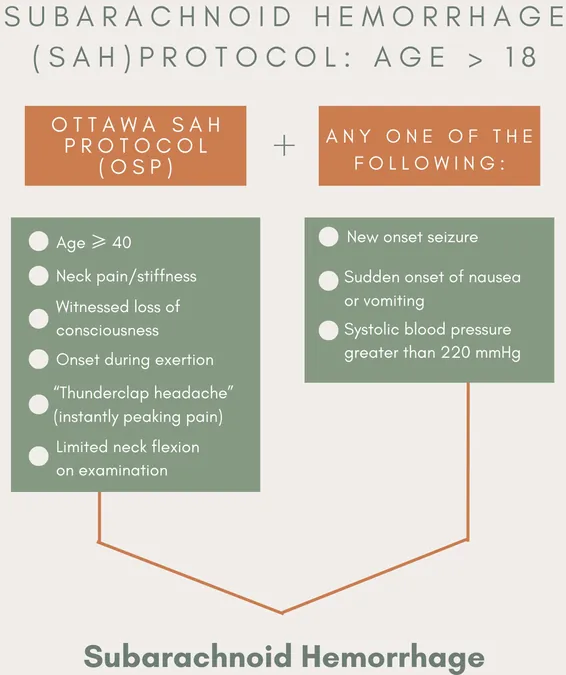
Polk County Fire Rescue Implements Innovative Protocol to Detect Subarachnoid Hemorrhage
2024-10-08
Author: Nur
Introduction
The subarachnoid space of the brain is vital, housing critical blood vessels and cerebrospinal fluid. When aneurysms—a weakening in these vessels—rupture, they can cause subarachnoid hemorrhage (SAH), a severe type of stroke associated with high rates of morbidity and mortality. Treatments such as coiling and clipping are only available at comprehensive stroke centers (CSCs), which underscores the need for prompt diagnosis and transfer to specialized facilities.
Methods
In a groundbreaking study by Polk County Fire Rescue (PCFR) in Florida, which serves a population of approximately 850,000, a three-step SAH protocol was established. This IRB-approved initiative integrates the Ottawa SAH criteria alongside key symptoms, including new-onset seizures and critically elevated systolic blood pressure identified by emergency medical services (EMS). Initial medical management included administering labetalol, levetiracetam, and ondansetron as immediate interventions in the field.
Results
Out of 2,175 patients assessed for stroke, 80 were identified as having a probable SAH and were eligible for urgent transfer. The median age of these patients was 66, with a significant 33% presenting with systolic blood pressure exceeding 220 mmHg. Remarkably, the interfacility transfer rate for SAH cases plummeted from 12.9% to just 3.6% following the protocol's implementation.
Conclusion
The success of the PCFR protocol could reshape emergency responses nationwide, demonstrating that early detection of SAH coupled with rapid transfer to a CSC significantly mitigates complications and enhances patient outcomes. By enabling precise field diagnoses, EMTs can avoid unnecessary transfers while ensuring patients receive optimal care. Future innovations may involve portable diagnostic technologies and enhanced training for EMTs to improve pre-hospital management of SAH cases even further.
Deep Dive into Subarachnoid Hemorrhage
SAH presents as a sudden, severe headache—sometimes described as the "worst headache of one's life." Unfortunately, the diagnosis can be elusive, as about 33% of patients may only report a headache without other clear symptoms. Furthermore, SAH is not only prevalent in the aging population; it carries significant early mortality risks; approximately 25% of patients die before reaching any medical facility, emphasizing the critical need for efficient emergency protocols.
Treatment options for aneurysms, the underlying cause of many SAHs, include endovascular coiling and surgical clipping. Coiling allows neurosurgeons to seal off the aneurysm using small platinum coils, while clipping involves a direct surgical approach to prevent further bleeding. Both methods, however, can only be performed in designated CSCs, necessitating swift transfer for the best outcomes.
Current Trends and Future Directions
Interestingly, improvements in lifestyle, like reduced smoking rates and better hypertension control, have contributed to a decline in SAH incidence rates—ranging from a 59% decrease in Japan to a 14% drop in North America. The challenge remains to maintain this downward trend and improve early detection methods.
To address existing gaps in prehospital care concerning SAH, PCFR's protocol signifies a pivotal leap forward. By focusing solely on those who meet certain criteria—including new seizures, nausea, or extreme blood pressure readings—EMS can significantly enhance the timely diagnosis and treatment of SAH.
This innovative protocol not only serves as a model for other EMS agencies but embodies a critical, life-saving shift in emergency preparedness and response.
In conclusion, with continued efforts to refine SAH detection strategies and pre-hospital care logistics, regardless of the time of day or the complexity of the case, we could see a transformative impact on survival rates and recovery trajectories for patients facing the threat of subarachnoid hemorrhage. The time for improved diagnostic protocols is now, as lives hang in the balance.


 Brasil (PT)
Brasil (PT)
 Canada (EN)
Canada (EN)
 Chile (ES)
Chile (ES)
 España (ES)
España (ES)
 France (FR)
France (FR)
 Hong Kong (EN)
Hong Kong (EN)
 Italia (IT)
Italia (IT)
 日本 (JA)
日本 (JA)
 Magyarország (HU)
Magyarország (HU)
 Norge (NO)
Norge (NO)
 Polska (PL)
Polska (PL)
 Schweiz (DE)
Schweiz (DE)
 Singapore (EN)
Singapore (EN)
 Sverige (SV)
Sverige (SV)
 Suomi (FI)
Suomi (FI)
 Türkiye (TR)
Türkiye (TR)